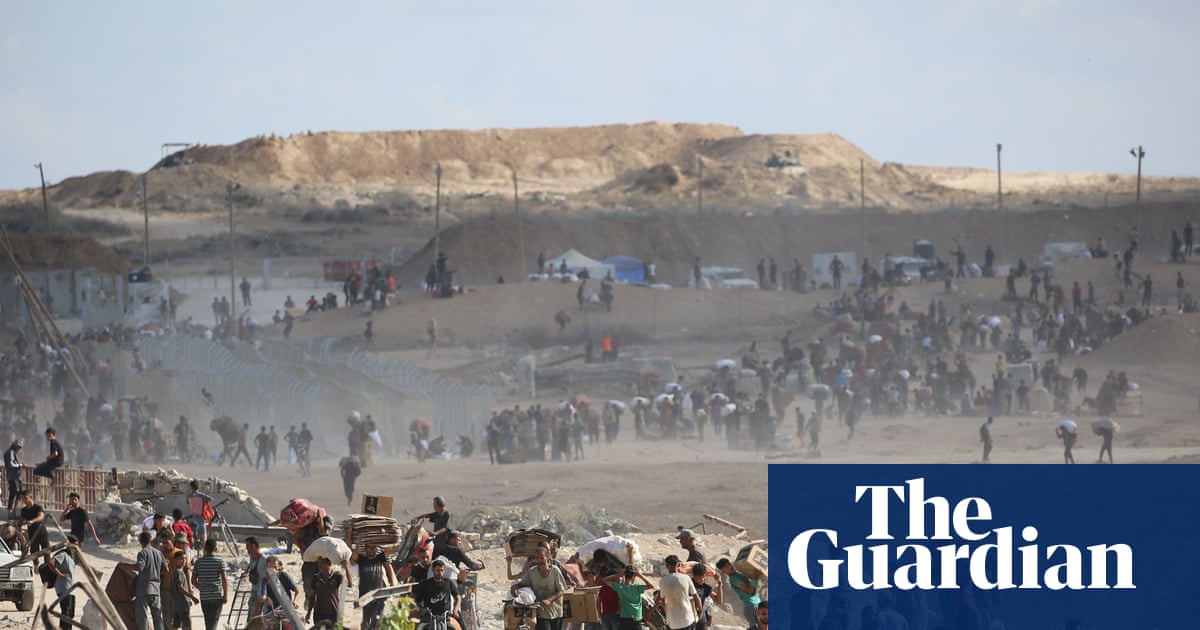Hamas’s partial acceptance of Donald Trump’s Gaza deal on Friday has been welcomed internationally and is the closest Israel and Hamas have got in two years to ending the war in Gaza.
Negotiators from Israel, Hamas and Palestinian parties, and the US will meet in Cairo, where they will begin negotiations on Monday to iron out differences remaining in the US president’s plan. They have a groundswell of optimism and political momentum behind them as Israeli, Palestinian, US and Arab leaders alike urge the warring parties to reach a deal.
The world is watching closely to see if this might finally mark the end of the brutal war in Gaza, which has a series of collapsed peace talks and has killed more than 67,000 Palestinians and wounded about 170,000 more. The death toll is widely considered to be an underestimate, as Gaza’s health ministry only lists bodies that have been recovered, not the thousands buried under the rubble.
How close is a deal?
Hamas’s partial acceptance of the Trump plan is the closest negotiators have got in recent months to a comprehensive end to the war in Gaza. However, they are still far off from a deal.
Trump’s 20-point proposal to end the war in Gaza stipulates that Hamas release all hostages within 72 hours, surrender ruling power to a transnational authority headed by Trump, and disarm. In return, Israel would gradually withdraw its troops from the Gaza Strip and return more than 1,000 Palestinian prisoners.
The deal will also mean a surge of humanitarian aid to Gaza, parts of which are undergoing famine, and reconstruction funds to the strip, which has been almost entirely decimated.
Hamas only agreed to three points: the release of all hostages, the surrendering of power and the withdrawal of Israeli troops from Gaza. The group said that the rest of the deal would have to be discussed alongside other Palestinian parties, as it is part of a “collective national stance”.
In practice, this means that Hamas wants further negotiations on the thornier parts of the Trump deal, particularly on the request that it disarms, and a solid timetable on Israel’s withdrawal.
Where and when will negotiations take place?
Negotiators have flown to Cairo to hammer out details to bridge the gap between Israel and Hamas.
Negotiations will start tomorrow and are expected to bring results within a few days, whether positive or negative.
Trump posted a picture of a map of Gaza on Saturday night that shows the line to which Israeli troops should withdraw and said that if Hamas agreed to it, that the ceasefire would begin immediately. The US president is eager to end the war as it comes to its two year mark and before the Nobel committee announces who receives the peace prize on 10 October, which is an extensively reported obsession of his.
Benjamin Netanyahu said a deal to bring Israeli hostages home would ideally happen in the coming days.
What gaps remain?
Both Hamas and Israel have hedged their bets heading into negotiations.
Hamas has consistently refused to lay down its arms in past negotiations. It has given no word on if its position has changed on this, even as it principally agrees to Trump’s plan, with qualifications. Trump and Israel have made it clear that there is little wiggle room on the disarmament issue and are determined to pin Hamas down with binding language in any plan moving forward.
Hamas also said that it accepted surrendering power over Gaza to a technocratic governing force, as specified by the Trump plan. However, in a statement it specified that it would accept a Palestinian technocratic governing body, not the international body that Trump laid out in its plan.
Israel has also tried to keep the issue of its troop withdrawal vague. Just hours after announcing Trump’s plan in a joint press conference in Washington last week, Netanyahu published a video reassuring Israelis that troops would remain in most of Gaza.
On Saturday night, the Israeli prime minister again repeated that troops would stay in Gaza, saying that hostages would be returned while the “IDF remains deep inside the strip”.
Netanyahu’s position seemingly stands against the stipulation in Trump’s plan that Israeli troops fully withdraw from Gaza. Hamas will seek reassurances that Israel will fully withdraw from Gaza and that if it gives up its weapons, that Israel will not re-enter the strip.
Negotiators will have to bridge these gaps, obtaining clear, strict language on disarmament from Hamas. They will also have to demonstrate to Hamas that Israel will genuinely withdraw from Gaza and that there will be international guarantees that will compel Israel to adhere to the terms of the deal.
The differences could be reconciled and the US will certainly push the two sides to reach a deal. However, negotiations have got close to a deal before suddenly collapsing several times in the past two years, leaving both parties wary of celebrating before pen is on paper.
